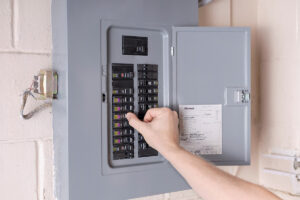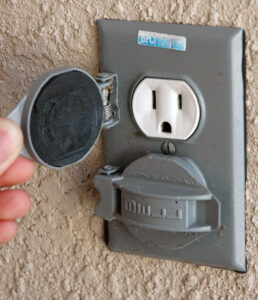It’s back to school season and your children are suddenly busy with new classes, books, bus routes, and hopefully no teachers’ “dirty looks.”
While the Science Fair may not come until Spring, preparing a topic now will help your middle school child wrap his or her head around new concepts and brainstorm creative ways to present the information.
The following science fair project will engage and excite your young learner. Parenting bonus: work on the project together so you both learn something!
Build an Electrical Circuit
In this experiment, your little Einstein will discover how electricity works by building an actual circuit through which electricity can flow. Using a power source, such as a battery, the energy will then flow through a wire to a light bulb or other object and back to the power source once again. Gather the following household items to help your child create energy:
-
Small light bulb or flashlight bulb
-
One D battery for a regular light bulb or one AAA battery for your small flashlight bulb.
-
2 alligator clip wires or aluminum foil
-
Paper clips
-
Electrical or Scotch tape
-
Bulb holder (optional)
-
Battery holders (optional)
If using foil instead of wires, cut two strips at 6” long and 3” wide. Fold each tightly along the long edge to create a thin, wire-like strip.
If using paper clips in place of battery holders, tape one end of the paper clip to each end of the battery using thin pieces of tape and connect your wires to the paper clips.
Creating a circuit
1. Connect one end of each wire to the screws at the base of the light bulb holder. Be sure to help your young one release each screw enough to fit a foil strip underneath if using foil instead of wire.
2. Connect the free end of one of your wires to the negative (-) end of the battery. Observe and note if anything happens.
3. Attach the free end of the other wire to the positive (+) end of the battery and note any bulb activity.
Adding Power
1. Disconnect your battery from the circuit. Stand one battery so that the positive end is pointing up and set the other battery beside it so that the negative end is pointing up. Tape the batteries around their middle to hold them together.
2. Place a paperclip across the batteries to connect the positive end of one to the negative end of the other. Tape the paper clip in place. Avoid taping the metal battery ends.
3. Turn the batteries over and tape one end of the paper clip into each battery. Connect one wire to each paper clip, and make sure that the bottom of the battery pack has only one paper clip, and no wire connected to it.
4. Connect the free ends of these wires to your light bulb.
What do you see?
In the first section, you built a simple circuit and used a battery to light up the bulb. However, when you connected the light bulb to one end of the battery using the wire, it did not light up because battery energy only works when flowing out from the negative end and back to the positive. What you created was an open circuit, while a closed circuit is required to keep energy flowing.
Closed circuits
When a circuit is complete, or closed, electrons (tiny particles with negative charges that create electricity) can flow from one end of the battery to the other, carrying energy through wires. On this path, the circuit carries electricity to electrical objects connected to it, such as the light bulb.
Conductors vs. Insulators
Any material that electricity can flow through is called a conductor. Materials that stop the flow of electricity are known as insulators. Using the circuit above, you and your child can have a “blast” testing objects around the house to see which ones are conductors and which are insulators. Simply create an open circuit and use the ends of the free wires to connect to objects and see if they light up the bulb. In general, plastic, rubber, and cloth items will be insulators and metal will conduct electricity. However, allow your child to test items for herself and come to her own conclusions.
Display
Be sure to display images of the project steps on your tri-fold board, whether using photographs or drawings. A visit to a crafts shop for additional supplies, such as markers and science-themed paper applique images can help showcase your child’s efforts on what could be an A+ team effort!
Start the school year with a “high voltage” science fair project that’s sure to excite and inspire. By setting aside time to help your young learner test a hypothesis, you show your support and have a little hands-on fun of your own.
Have electrical questions of any kind? Call Prairie Today!


